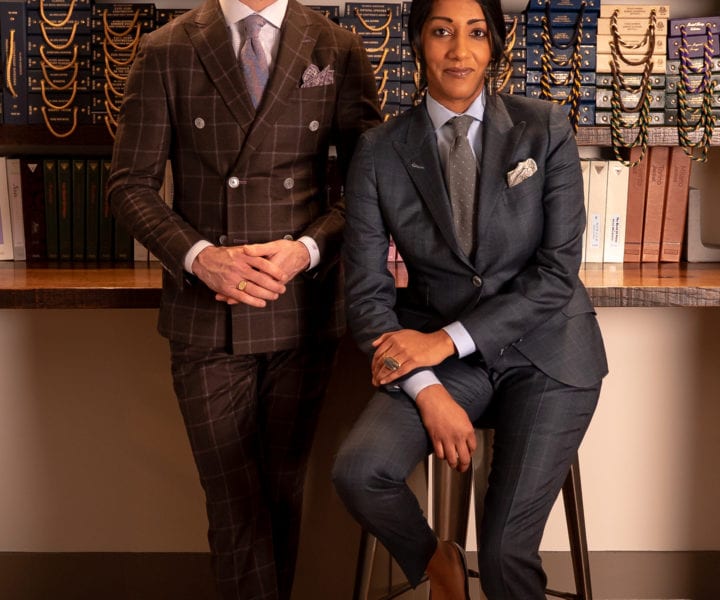Checking Out the Art of Tailoring: A Comprehensive Guide to Customized Garments and Personal Style
The art of customizing transcends simple clothing building and construction; it personifies a thorough craft that integrates personal identification with sartorial sophistication. This guide provides understanding into the basic principles of custom apparel, from comprehending textile option to the nuances of attaining an impeccable fit. By taking a look at the intricacies of tailoring, one can unlock the capacity for self-expression and sophistication in their closet. Yet, as we explore these components, the question stays: what absolutely defines a tailored item, and just how can one ensure their garments are not just stylish however also classic?
The Basics of Tailoring
At its core, tailoring is the meticulous craft of personalizing garments to boost fit, comfort, and design. A knowledgeable dressmaker employs precise measurements, making sure that each piece is made to match the individual user.
The basics of customizing include several basic methods. Exact dimension is extremely important; it offers as the foundation for any kind of successful tailoring task. Various body measurements, such as breast, waistline, and inseam, have to be thoroughly recorded to accomplish a perfect fit.

Lastly, the finishing techniques-- such as sewing, pressing, and detailing-- are essential for achieving a polished appearance. These elements, when combined, exhibit the virtuosity and accuracy that specifies the globe of customizing, creating garments that are as practical as they are aesthetically pleasing.
Comprehending Fabrics and Textiles
An extensive understanding of fabrics and textiles is necessary for any tailor, as the option of material considerably affects the last garment's fit, longevity, and overall aesthetic. Fabrics can be broadly classified into natural and synthetic fibers. Natural fibers, such as cotton, woollen, bed linen, and silk, deal one-of-a-kind properties like breathability, moisture-wicking, and comfort. Wool, for instance, is renowned for its insulation and strength, making it excellent for tailored suits and outerwear.
Alternatively, synthetic fibers, including polyester, nylon, and spandex, provide benefits such as enhanced sturdiness, stretchability, and simplicity of maintenance. Blends of natural and synthetic fibers often combine the best characteristics of both, leading to flexible and practical textiles ideal for different applications.
A lightweight fabric might curtain perfectly yet may not give the framework required for customized garments. Hence, a dressmaker's knowledge in materials and textiles is indispensable in developing customized apparel that fulfills customers' expectations and improves their personal style.
Picking the Right Tailor

Look for recommendations from pals, family members, or on the internet testimonials to determine the high quality of their work. When you have a shortlist, see the tailors face to face. Observing their workshop can supply insights right into their professionalism and interest to detail.
When getting in touch with potential tailors, interact your needs plainly. A good dressmaker will listen diligently and ask important inquiries to recognize your vision. Try helpful site to find someone that demonstrates an interest for their craft and a desire to collaborate with you throughout the procedure.
Last but not least, don't ignore the value of pricing and turn-around time. While high quality frequently comes at a premium, ensure that their services fit within your budget plan. Ultimately, the right tailor will certainly not just boost your closet however likewise raise your self-confidence in your individual design.
Tailoring Fit and Style
Achieving the ideal fit and design in tailored garments needs a thoughtful approach that balances personal preferences with specialist workmanship. Tailoring fit starts with understanding one's physique, proportions, and unique dimensions. A skilled tailor will certainly perform a detailed fitting session, taking note of locations such as shoulder size, waistline dimension, and sleeve length to develop a shape that flatters the user.
Along with fit, design personalization entails picking style components that reflect specific taste. This encompasses fabric selection, color, and detailing such as lapels, buttons, and pocket designs. A traditional two-button sports jacket can be changed with a special textile or different stitching, enabling for personal expression while preserving sophistication.
Cooperation between the user and dressmaker ensures that both fit and design are perfectly integrated, resulting in a garment that enhances self-confidence and showcases individual style. Eventually, customizing fit and design is about producing apparel that resonates with the individual while sticking to the principles of tailored elegance.
Keeping and Taking Care Of Tailored Clothing
Correct upkeep and care of tailored clothes are vital for preserving the garment's fit, material, and general look. To make certain durability, invest in high quality storage space options. Constantly make use of padded hangers for coats and fits to keep their form, and store trousers level or folded to stop creasing.
Cleaning up customized garments calls for mindful factor to consider. When essential, opt for completely dry cleansing, but restriction this practice to preserve the fabric's all-natural fibers.
Normal evaluation is important; look for loose threads, buttons, and any type of signs of wear. tailor tuxedos perth. Dealing with these problems without delay can avoid a lot more comprehensive damage
In addition, turn your customized pieces to stay clear of overuse of a single garment. Take into consideration seasonal storage space methods, such as using breathable garment bags, to secure your customized clothes from dirt and parasites throughout off-seasons.
Final Thought
In final thought, the art of tailoring read this includes a mix of technical skill and artistic expression, allowing people to attain garments that reflect personal design and fit. Choosing an experienced dressmaker and maintaining customized clothes makes certain durability and proceeded fulfillment.